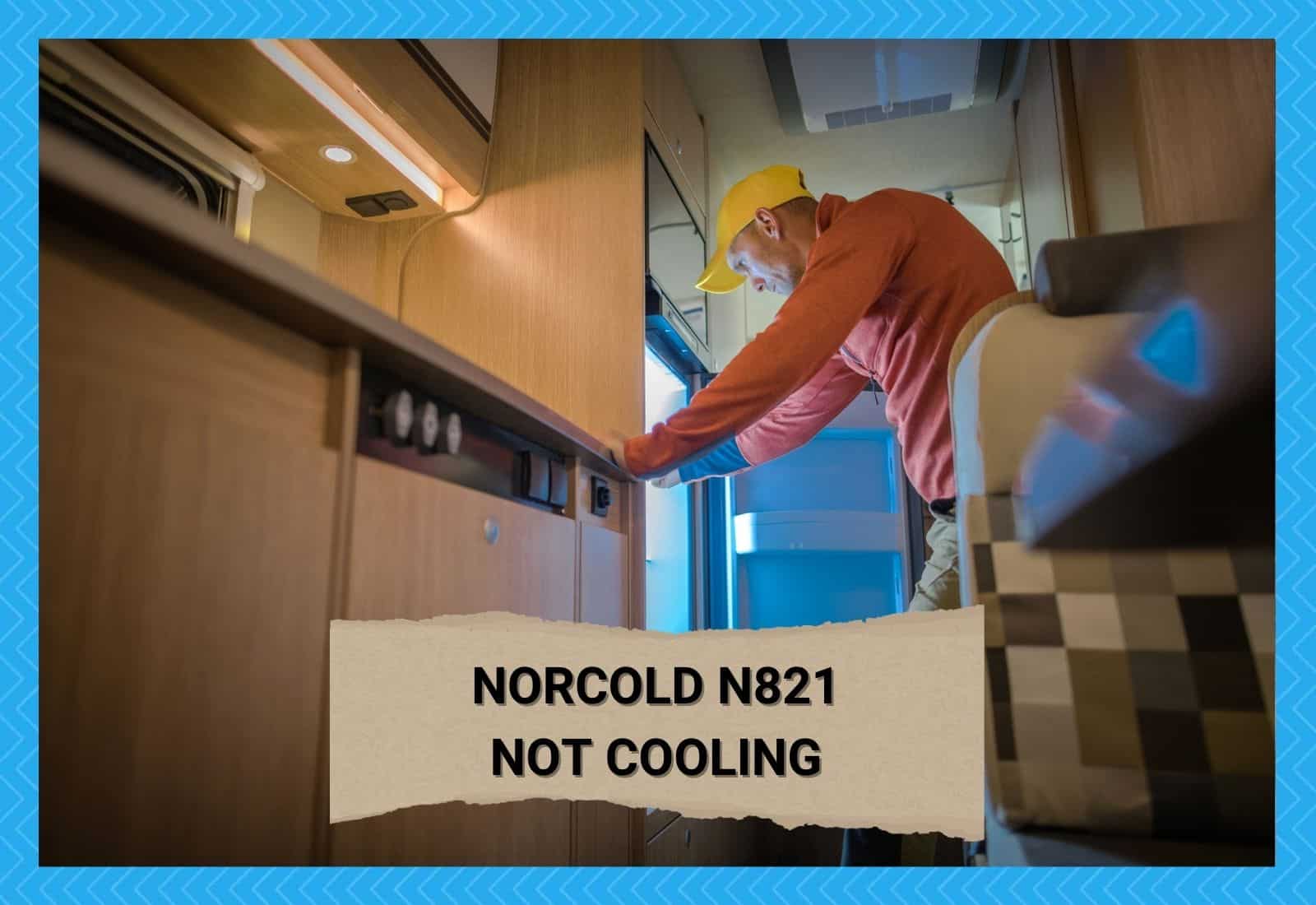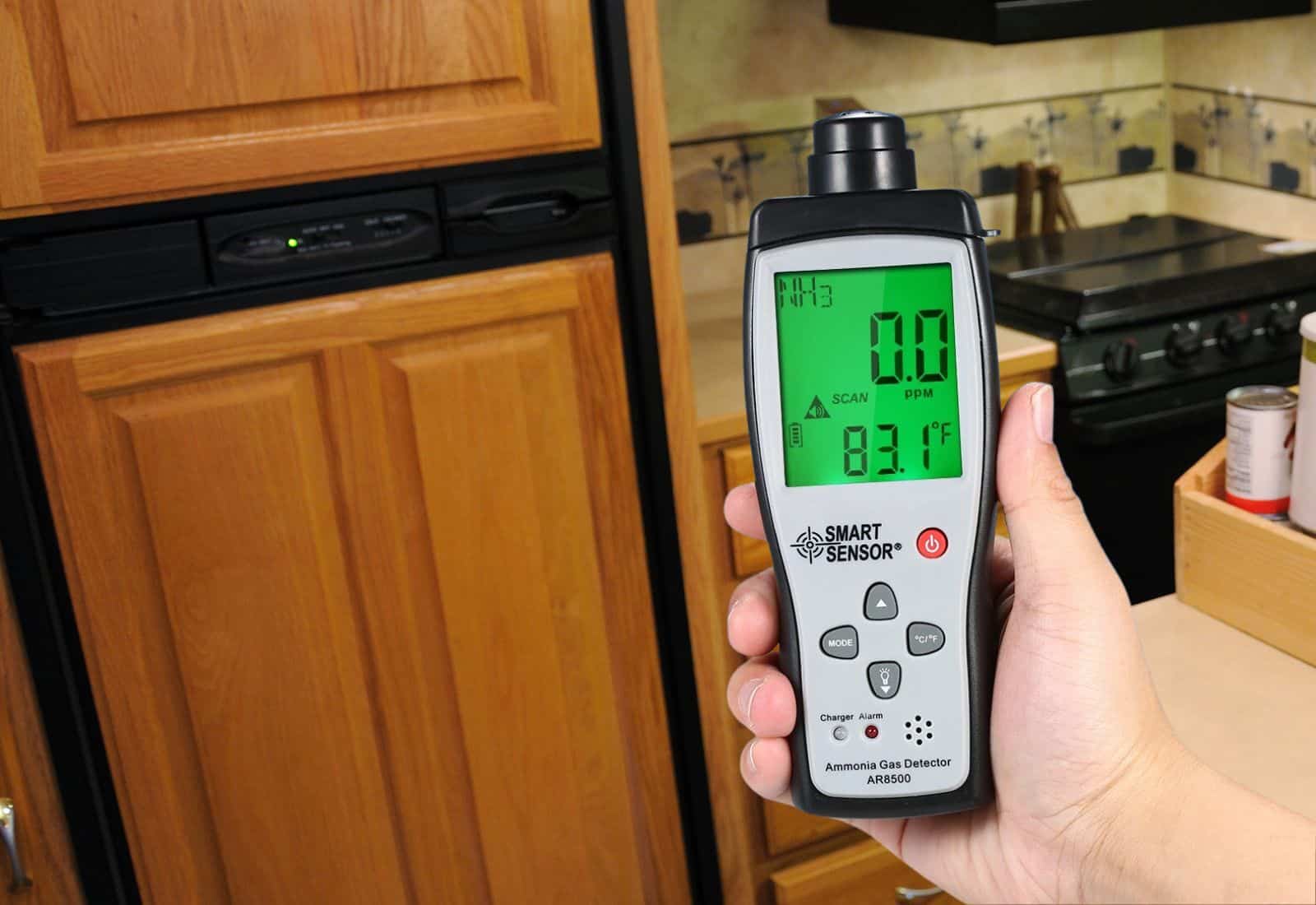
Introduction
RVs are the perfect compact space for us to live comfortably on the road. However, the enclosed space can cause problems with gas or chemical leaks if they are not ventilated quickly. This is especially true of older refrigeration units that use ammonia as a cooling agent.
Ammonia is notorious for leaking and potentially contaminating your food. Therefore, it is vital to have an effective method to test your fridge to ensure you are cooling your food in a safe environment.
Why Is Ammonia In My Fridge
Ammonia is a crucial element that is used in refrigerators to cool down our food. Ammonia was a contemporary addition to the refrigeration industry as a replacement for older refrigerants.
There was a push to change due to the devastating discovery of the harsh environmental impact of the older chemicals, which were very effective at disintegrating the ozone layer.
Although most manufacturers have moved to alternative refrigeration methods, there is still an abundance of ammonia-based appliances in circulation.
Although ammonia is an excellent refrigerant, it is surprisingly toxic if ingested by humans. Therefore, ammonia fridge owners must be competent in identifying and testing if there is an ammonia leak in their refrigerators.
There are three highly reliable methods to detect any harmful leakage accurately.
How To Check Ammonia Level In RV Fridge?
Method 1 – Ammonia Detector
One of the easiest and most effective means of ammonia detection is to use a purpose-built detector. They operate by measuring the ammonia level in the atmosphere, which indicates how to what degree it can penetrate all of the items in the fridge.
You may think that you could smell ammonia if it were leaking. Unfortunately, your sense of smell will not be sensitive enough to pick it up unless there is a severe leak.
You can purchase a detector at most hardware stores cheaply and easily. They are very straightforward to use. Simply open your fridge, activate your detector, and hold it inside the compartment.
After around a minute, the device should be able to give you a reading. Don’t panic if the level is too high. Simply ensure that the fridge is well-ventilated and cleaned regularly.
Method 2 – Perform a Litmus test
Another helpful method is to use litmus paper to test the level of airborne ammonia. Similar to a digital detector, litmus paper is excellent at detecting ammonia, but it is more rudimentary and slightly less accurate than a digital detector.
For the test, you can take the paper and place it in the fridge for around 5 minutes. If the paper has turned blue, then you know that the ammonia is concerningly high. On the other hand, if the paper hasn’t reacted, then it is likely that the area is safe.
Method 3 – Use Your Senses
Although it is not a technically accurate measurement method, your senses can be used if you have nothing else. Although it is more primitive, using your sense of touch and smell can be an excellent assessment method.
Firstly, and luckily, ammonia has a very distinctive smell. Unfortunately, it smells distinctly of cat urine. Although unpleasant, it should be straightforward to identify.
Vigorously smell the interior of the fridge and the cooling unit at the rear of it too. If there is even a faint smell, you can be sure there is at least a small leak.
Alternatively, you can assess the cooling unit to detect a fault. The radiator and refrigerant pump at the back of the fridge should be warm due to the system’s cooling method.
If you feel the cooling system and it is too hot to touch or the heat is concentrated in one area, then you can be sure that the ammonia is running low.
Most ammonia-cooled refrigerators cannot be recharged because of their hazardous nature and will require the fridge to be replaced.
Conclusion
If there is evidence of an ammonia leak, it is time to start considering replacing or repairing your refrigerator.
However, even if they are at a safe level, it is still essential that you continually monitor, particularly older refrigeration units, for potentially hazardous leaks.
Using the three methods above you will easily be able to detect an issue early on and resolve it before there is any risk to your health.


